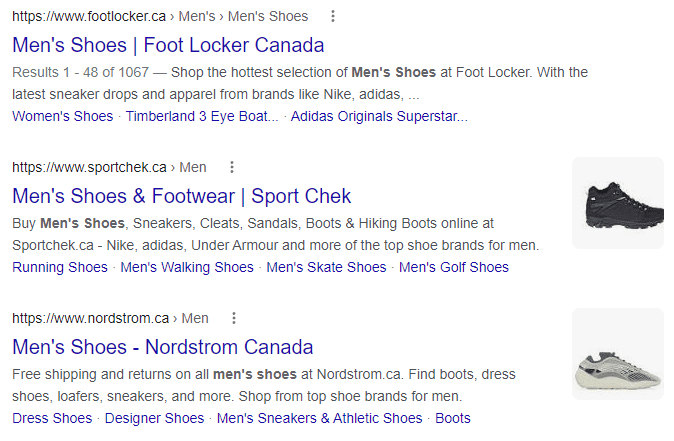Meta Descriptions
Why you need to write them, even though Google probably won’t pay attention
Meta descriptions are short blurbs that appear under the title of your web page in search engine results pages (SERPs). They’re meant to provide potential visitors with a brief summary of what the page is about, and can encourage them to click through to your site.
Even though Google will often replace them with a snippet from your page content, it’s still important to write your own there as a quality fallback, if nothing else. We’re going to run through some simple, actionable tips that’ll help you write more compelling meta descriptions.
What are meta descriptions, exactly?
When you search for something on Google, the text results you see will have two elements: the blue, clickable page title (aka title tag) and the black description underneath. That description is what’s known as your meta description.

How you apply a meta description depends entirely on the platform you’re using. The steps required for WordPress are very different to Squarespace and Wix, for example.
To check the meta description on a page, though, you’ll always find it in the page source, looking something like this:
<meta name=“description” content=“This is where you’ll find the meta description for any page in the page source” />
Doesn’t Google just use snippets to overwrite my descriptions?
Quite often, yeah. To offer the most relevant information in the SERP, Google will often use a snippet of content from your web page that closely relates to the searcher’s intent. For example, if you have a page about a particular TV and someone was searching for the weight of that TV, Google may replace your meta description with a snippet that mentions that model’s weight.
The thing is, even though they do this quite often, “quite often” isn’t “always”. AI may be getting unnervingly effective at this type of decision making but it’s not perfect. You should always be writing your own meta descriptions as a safe and effective fallback when the search term was generic.
Meta descriptions are for users, not search engines
While title tags are a factor for both rankings and user engagement, meta descriptions have zero impact on your ranking. You will never increase your rankings by rewriting a meta description.
Now, before you go deleting that Asana task and ignoring them across your website, remember that rankings aren’t everything. Search engines don’t buy your product, users do. Effective meta descriptions are there to convince a user that your website is the search result they need to click on.
Use your target keywords in the description (but don’t go overboard)
Even though your meta description isn’t a ranking factor, it’s still important to use your primary keyword(s) in the meta description where it makes sense. Any words used in a search that also appear in the meta description will be highlighted in bold.
Here’s an example of that in action after I searched for “mens shoes”.

By using these same keywords and phrases in your description, you’ll going to stand out even better for the person searching for your product. That’s what we’re trying to achieve here, right?
Keep your meta descriptions short and compelling
You only get about 150 – 160 characters (920 pixels on desktop, 680 pixels on mobile) to write a description and this can be deceivingly difficult. Anything over Google’s pixel width limitation will be truncated, replaced with ‘. . .’

So, you need to make it clear that your page satisfies the searcher’s intent without rambling. To see exactly how they’re going to look for the end user, you can use tools like Higher Visibility’s SERP Snippet Optimization tool as a final check before publishing.
Best results generally come from user-driven descriptions. Spend those 150 characters talking about what the user can expect rather than how great your brand is.
Get creative — Interesting descriptions get more clicks
Have some fun with your meta descriptions to keep them on brand. They don’t always have to be dry, utility-driven blocks of text.
If you can appeal to a common pain point of the user in an interesting way, that’ll always be more compelling than simply stating that you have the solution and forcing some keywords in there.
Remember, your title tag and meta description are your chance to make a good first impression for new users.
–
Writing great meta descriptions is a bit of an art form that will take trial and error. Keep these tips in mind and take the time to craft some that make the user want to click your website from the search results.
Don’t forget to keep a close eye on your user engagement metrics (click-through rate, time on site and conversions) to see what kind of impact they’ve had on your bottom line.

